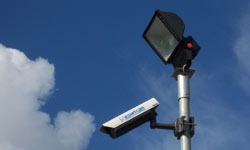
|
Call us on Freephone: 0800 4589883 |
|
Home > Services > Other Services Other ServicesHearing Aid Loops Hearing Aid LoopsAbout Audio Frequency Induction Loop SystemsAudio Frequency Induction Loop Systems (AFILS) are installed in places where hearing aid users will benefit from direct sound input to their personal hearing aid. The user switches their hearing aid to the 'T"-position (Telecoil) - this reduces background noise and increases clarity of speech information and the enjoyment of live sound. The direct sound may come from dedicated microphones and/or the microphones used for a sound reinforcement (loudspeaker) system. Microphones For Loop SystemsHearing aids have microphone(s) built-in to them. The loop system is simply a way of transmitting sound directly to the hearing aid. This is only of benefit to a hearing aid user, when the microphone(s) connected to the loop system are better placed to pick up wanted sound than the microphone(s) built into the hearing aid. Microphones should normally be less than 1 metre from the talker in quiet locations, and as close as 300mm in some noisier environments. In theatre (stage) applications, this can be up to several metres, but only due to the actors projecting their voices, and the background noise level being low. If more than three microphones are used, an automatic microphone mixer is desirable, as recommended in the British Standard for best practice. Examples
British StandardsNew installations are optimised for best performance for hearing aid users. We test the field strength, using calibrated instrumentation, and check that our installations are in accordance with best practice, British Standard 7594:1993. We only supply equipment manufactured to current British Standards. We will also check existing installations and provide a report of our findings and recommendations for improvements where necessary. Value Added Tax (VAT)Supply may be zero rated VAT when purchased by registered disabled persons, or for the benefit of hearing aid users by a registered charity or equivalent church organisation. PA & Speaker SystemsIf you are building, refitting or upgrading your shop, retail outlet, warehouse, restaurant, public house or private premises and need a new public address and speaker system or even an overhaul of your existing system? Securican offer a professional design and installation service, supplying high quality, branded stereo equipment and speakers, guaranteed to meet your requirements. PAT TestingPat testing or portable appliance testing is an important part of any health & safety policy. The Health & Safety Executive states that 25% of all reportable electrical accidents involve portable appliances. The Electricity at Work Regulations place a legal responsibility on employers, employees and self-employed persons to comply with the provisions of the regulations and take reasonably practicable steps to ensure that no danger results from the use of such equipment. This in effect requires the implementation of a systematic and regular program of maintenance, inspection and testing. The Health & Safety at Work Act (1974) places such an obligation in the following circumstances:
The level of inspection and testing required is dependant upon the risk of the appliance becoming faulty, which is in turn dependant upon the type of appliance, the nature of its use and the environment in which it is used. Securican offers a PAT testing service. Please contact us for a free quotation. Structured cabling systemA structured cabling system (SCS) is a set of cabling and connectivity products that integrates the voice, data, video, and various management systems of a building (such as safety alarms, intruder alarms, CCTV, security access, energy systems, etc.). In addition a versatile home, office and industrial remote monitoring and control product. The server room environment solution monitors temperature, relative humidity, PIR's, smoke detectors, and door switches etc. It can be interfaced into your existing building alarm and power systems to provide a remote monitoring capability with email and SMS notifications. |
|



